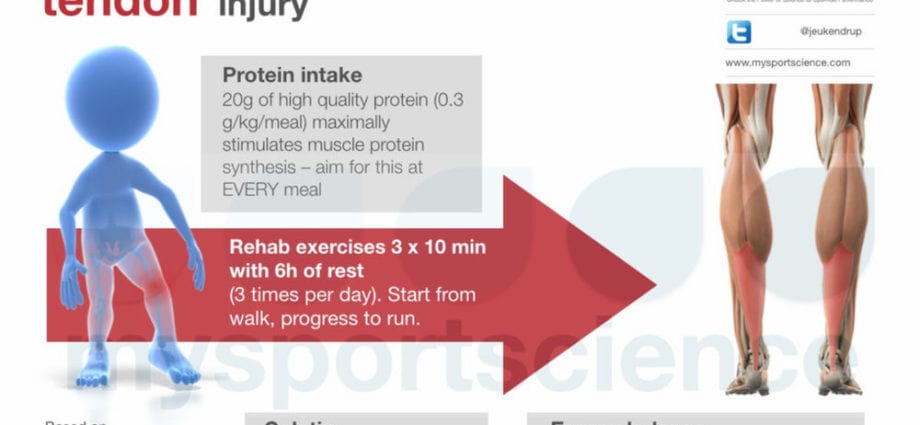Contents
A tendon is a connective tissue part of a muscle, one end of which smoothly passes into the striated muscle, and the other is attached to the skeleton.
The main function of the tendon is to transfer muscle force to the bones. Only then can the required work be done.
Tendons are divided into long and short, flat and cylindrical, wide and narrow. In addition, there are tendons that divide muscles into several parts and tendons that connect two bones in a tendon arch.
This is interesting:
- The strongest tendons are the tendons of the legs. These are the tendons belonging to the quadriceps muscle and the Achilles tendon.
- The Achilles tendon can withstand a load of 400 kg, and the quadriceps tendon can withstand as much as 600.
Healthy foods for tendons
In order for a person to be able to perform this or that movement, it is necessary that the musculoskeletal system works without misfires. And since the tendons are the connecting link of this system, then they should receive nutrition appropriate to their status.
Aspic, aspic, jelly. They are rich in collagen, which is an important constituent of tendons. The use of these products increases the elasticity of the tendon and helps them cope with heavy loads.
Beef. Champion in the content of essential amino acids. It is a building material for tendon fibers.
Eggs. Due to the content of lecithin, eggs are involved in the normalization of the functions of the nervous system. Plus, they are high in vitamin D, which is essential for tendon health.
Dairy products. They are a reliable source of useful calcium, which is responsible for the conduction of nerve impulses along the muscle-tendon complex.
Mackerel. It is rich in fats, which are important for protecting the tendon fibers from overload. In their absence, the regeneration process slows down, and the tendon can simply rupture!
Green tea. Increases the resistance of the tendons to stress. Increases their resistance to stretching.
Turmeric. Due to the presence of natural antibiotics in it, as well as elements such as phosphorus, iron, iodine and B vitamins, turmeric promotes rapid tendon regeneration.
Almond. Contains an easily absorbed form of vitamin E. Thanks to this, almonds help tendons to recover faster from injuries caused by overstretching.
Bulgarian pepper, citrus fruits. They contain a large amount of vitamin C, which is an essential component of collagen.
Liver. It is rich in vitamin D3, as well as copper and vitamin A. Thanks to these substances, the heel of the tendon is strengthened, with the help of which it attaches to the bone.
Apricot. It is rich in potassium, which is responsible for the performance of the muscles that control the skeletal system.
General recommendations
For tendons, a very important nutritional requirement is the availability of calcium and collagen-forming products. In their absence (or deficiency), the necessary substances will be automatically extracted from the muscles and bones. Thus, the normal functioning of the musculoskeletal system will be threatened!
If you have problems with tendons, doctors advise using ointments containing collagen.
Folk remedies for normalizing tendon function
The following compresses will relieve pain and restore the functionality of the tendons:
- a shepherd’s purse;
- wormwood (fresh leaves of the plant are used for the compress);
- Jerusalem artichoke.
Harmful foods for tendons
- Sugar, cakes and muffins… When consumed, muscle tissue is replaced by adipose tissue. As a result, the tendons are deprived of the binding component. In addition, their overall tone decreases.
- Fats… Excess consumption of fatty foods causes calcium blockage. As a result, it does not enter the tendon in sufficient quantities and it begins to extract calcium from the bones.
- Alcohol… Causes calcium blockage. In addition, under the influence of alcohol, degenerative changes in the transitional muscle-tendon tissue occur.
- Coca Cola… Contains phosphoric acid, which flushes calcium out of bones.
- Oatmeal… Contains phytic acid, which blocks calcium absorption and subsequent transport to tendons and bones.










